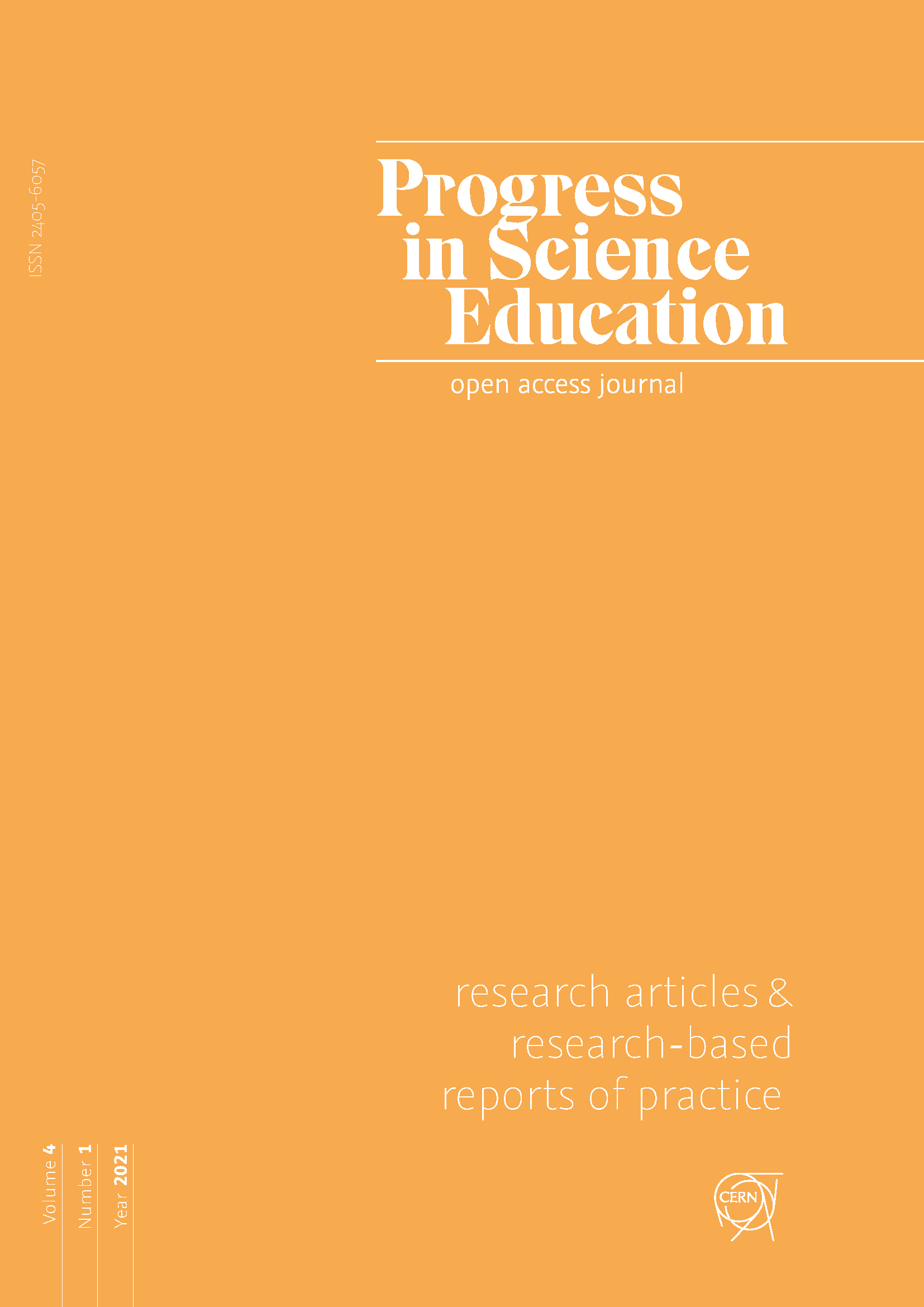An instrument to measure students' perception of the authenticity of an out-of-school learning place
DOI:
https://doi.org/10.25321/prise.2021.1072Abstract
Background: One of the big opportunities offered by out-of-school learning places at research institutions is their authenticity, as they can provide insight into authentic research and work of scientists.
Purpose: To what extent the students perceive this “authenticity of place” may however be individually different. In order to measure whether students indeed perceive a given out-of-school learning offer as an authentic learning place from their individual perspective an instrument is needed.
Sample/setting: The Paul Scherrer Institute (PSI) is a genuine research environment for natural and engineering sciences and can therefore be considered as an authentic out-of-school learning place. Students from 3 different cantons in Switzerland participated in a field trip to the PSI, including a guided tour to one of its research facilities (on renewable energies) and a hands-on workshop in its science outreach lab (iLab) related to that topic. Data about test characteristics were collected in a pilot and in a main study (n = 80, March 2018 and n = 94, May to September 2018).
All the classes were taught by the same teacher to learn about the basics of the research being done in that particular field of research at PSI. The guided tour was done by the same scientist from PSI for all classes.
Design and methods: The questionnaire consists of a 6 point Likert scale with 9 items. An item analysis was carried out, as well as a factor analysis testing for the dimensionality of the questionnaire.
Results: In terms of content the items for authenticity of place can be divided into one group with a cognitive focus and another group with an emotional focus. The item analysis of the total instrument yields good to very good characteristics (Cronbach’s Alpha as estimate of internal consistency αC = .91, average item-test-correlation rit = .71), similarly for the sub-tests with cognitive and emotional focus (αC = .80, rit = .63 and αC = .89, rit = .77)
A performed confirmatory factor analysis proved compatible with a two-factor and a one-factor model (CFI = 0.98 and 0.97, respectively). The fact that the correlation between the two factors “cognitive” and “emotional” is very high (.94) argues in favour of the one factor model (McDonald’s omega as estimate of internal consistency adapted to factor analysis: ω = 0.92).
Conclusions/Implications for practice and future research: The instrument presented here can be used as a one factor scale with good to very good test characteristics, if an overall measure of perceived authenticity of place is needed. The two subscales with cognitive and emotional focus could also be used separately, as their test characteristics are also satisfactory to good. Due to its short format and administration time (around 2 minutes) the instrument can be well integrated in the evaluation of out-of-school learning places.
The scale was developed specifically for a research institute and has to be adapted for other out-of-school learning places such as museums, science centres or field trips. For future research it will be interesting to include other dimensions of perceived authenticity (such as authenticity of a person, e.g. the scientist at a research institute) and to study their combined effects on educational outcomes. Work along these lines within the framework of a larger research project on out-of-school science learning is in progress.
Keywords: authenticity, out-of-school science learning, place-based learning, context-based science education
Downloads
Published
Issue
Section
License
Copyright (c) 2021 The Author/s

This work is licensed under a Creative Commons Attribution-NonCommercial-ShareAlike 4.0 International License.
Authors who publish with this journal agree to the following terms:
- Authors retain copyright and grant the journal right of first publication with the work simultaneously licensed under a Creative Commons Attribution License that allows others to share the work with an acknowledgement of the work's authorship and initial publication in this journal. The applicable licence is https://creativecommons.org/licenses/by-nc-sa/4.0/, which means
You are free to:
Share — copy and redistribute the material in any medium or format
Adapt — remix, transform, and build upon the material under the following terms:
Attribution: You must give appropriate credit, provide a link to the license, and indicate if changes were made. You may do so in any reasonable manner, but not in any way that suggests the licensor endorses you or your use.
NonCommercial: You may not use the material for commercial purposes.
ShareAlike: If you remix, transform, or build upon the material, you must distribute your contributions under the same license as the original.
Authors are able to enter into separate, additional contractual arrangements for the non-exclusive distribution of the journal's published version of the work (e.g., post it to an institutional repository or publish it in a book), with an acknowledgement of its initial publication in this journal.
Authors are permitted and encouraged to post their work online (e.g., in institutional repositories or on their website) prior to and during the submission process, as it can lead to productive exchanges, as well as earlier and greater citation of published work (see The Effect of Open Access).

